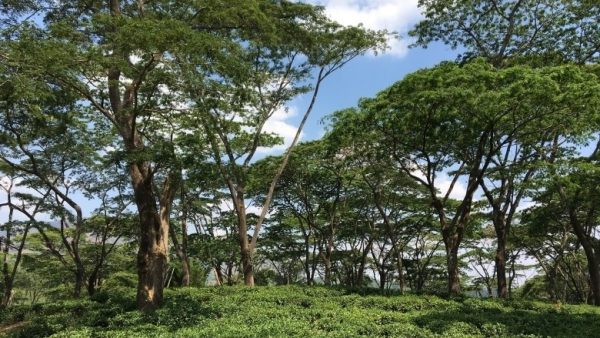
Forestry Carbon Credits are credits that are generated from project activities to reduce Green House Gases (GHG) including Reducing emissions from deforestation and forest degradation (REDD+), and Improved Forest Management.
According to the World Bank deforestation and forest degradation contribute about 12% of the world’s greenhouse gas emissions, but nature-based solutions, including forests, can provide up to 37% of the mitigation needed to keep the global temperature rise below 2°C[1]. This statement demonstrates that nature-based solutions in general and forest-based solutions in detail are promising tools for businesses and organizations to achieve their climate goals as well as a potential economical source for forest management and protection units.
In Vietnam, according to the Ministry of Agriculture and Rural Development statistics, there is a total of 14.6 million hectares of forest, of which, there were 10.3 million hectares of natural forest and 4.3 million hectares of planted forest. Between 2012-2017, the area of deforested-natural forest due to illegal deforestation took up 11% of total deforestation, and the remaining 89% was mainly due to the conversion of forest use for economic development projects[2]. The additional economic sources from forestry carbon credit will play a crucial role in natural forest conservation and planted forest area enhancement which could offer ecosystem and biodiversity protection, creates livelihoods for local people, ensures the implementation of sustainable development goals, especially the 2050 net-zero commitment of Vietnam.
Forestry carbon credits development is a potential opportunity for forest management and protection units in Vietnam, especially in the current context when the demand for this type of credit is significantly increasing in the carbon market. In addition, the price of a forestry carbon credit is usually higher than another type of carbon credit. According to World Bank, in 2019, the average price for a REDD+ carbon credit was 3.79 USD/credit, and for the ARR project, the price was 7.89 USD/credit[3]. In Vietnam, the project “Emissions reductions in the north-central region of Vietnam for the period 2019-2025” is implemented in 6 provinces from Thanh Hoa to Thua Thien – Hue province to reduce GHG and increase carbon sequestration to around 32.09 MtCO2e, of which, 10.3 MtCO2e will be sold for the Forest Carbon Partnership Facility (FCPF) with the price of 5 USD/credit [4]. Furthermore, according to the organization Ecosystem Marketplace [5], the price of forestry carbon credits would rapidly increase in the coming years when there will be more and more demand for this type of credit from the private sector and free market.
Despite being an emerging and promising market, with a wide range of approved methodologies for emission reduction and sequestration enhancement from afforestation and forest protection activities, the number of registered forest carbon credit projects is minimal. Globally, there are 14 reforestation projects registered under Clean Development Mechanism (CDM) and 225 under Verified Carbon Standard (VCS). In Vietnam, there is only Cao Phong reforestation project registered under CDM; this is a minimal number in comparison to the number of commercial carbon credit projects in other sectors.
There are many reasons for the limited number of registrations mentioned above, from the complexity of the methodology; strictness in data collection and monitoring requirements; risks during the implementation of the forestry project. Some of the challenges include the following:
- The eligibility of the project according to relevant methodology: To implement a forestry carbon credit project, the project area must be in line with certain conditions according to relevant methodology. For example, for a reforestation project according to VCS, the project area must be bare land or shrub and no evidence of forest in the last 10 years since the beginning of the reforestation activities. This condition creates an obstacle to collecting historical data to identify eligible areas for forestry project implementation.
- Measuring and monitoring data: Measuring the carbon sequestration potential of the forest is a crucial obstacle, especially for a tropical country like Vietnam because of the forest diversity, the differences in physical and environmental conditions between regions. Thus, many forest regions require field measurement to adjust the suitable estimation of carbon sequestration in line with field conditions, which would be a big challenge for a large area where field measurement and monitoring require considerable human and financial resources.
Periodic monitoring for large projects such as Avoided Planned/Unplanned Deforestation for provinces or national reserves is tricky. Two common methods to monitor large-scale changes are remote sensing image analysis combined with surveying. However, these two methods are considered expensive and may have many errors during the sampling process.
- Risks during implementation: During the implementation phase, a project may face many risks, such as pests, frost, forest fires… that cause the project to fall to archive the estimated amount of carbon credits. In addition, the long credit period (from 20 to 100 years) requires a great deal of effort from the stakeholders to keep the project running as designed. Thus, current standards require a certain number of credits (typically 15-20%) to be deposited as compensation in the event of a reversal in emissions reductions from the project.
There are also many other challenges in the development and implementation phase of forestry carbon credit projects. To address the above challenges, VNEEC is currently working with domestic and international experts to assess the potential and develop forestry carbon credit projects in certain provinces to promote the development of the forestry carbon credits market in Vietnam.
Trinh Nam Phong
References:
[1] https://www.worldbank.org/en/news/feature/2021/11/05/healthy-forests-are-fertile-ground-for-carbon-markets
[2] https://nhandan.vn/moi-truong/he-so-che-phu-rung-cua-viet-nam-dat-42-cao-hon-muc-binh-quan-cua-the-gioi-623083/
[3] https://openknowledge.worldbank.org/handle/10986/35620
[4] https://baophapluat.vn/viet-nam-se-thu-ve-51-5-trieu-usd-nho-chuyen-nhuong-10-3-trieu-tan-co2-post368183.html
[5] https://www.ecosystemmarketplace.com/publications/state-of-forest-carbon-finance-2021/
8,820 views, 2

Tags:
Bài viết liên quan